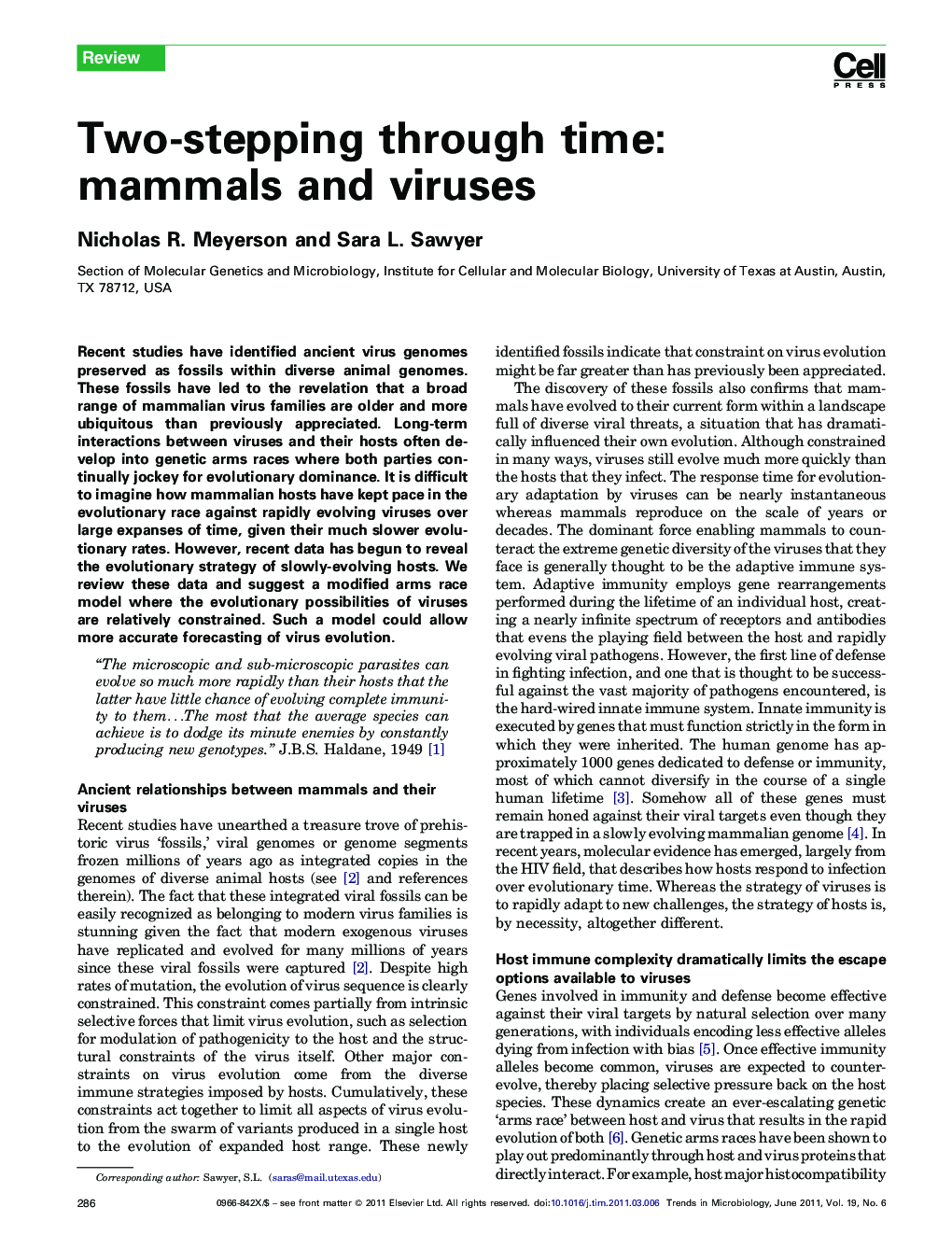| کد مقاله | کد نشریه | سال انتشار | مقاله انگلیسی | نسخه تمام متن |
|---|---|---|---|---|
| 3422319 | 1226743 | 2011 | 9 صفحه PDF | دانلود رایگان |

Recent studies have identified ancient virus genomes preserved as fossils within diverse animal genomes. These fossils have led to the revelation that a broad range of mammalian virus families are older and more ubiquitous than previously appreciated. Long-term interactions between viruses and their hosts often develop into genetic arms races where both parties continually jockey for evolutionary dominance. It is difficult to imagine how mammalian hosts have kept pace in the evolutionary race against rapidly evolving viruses over large expanses of time, given their much slower evolutionary rates. However, recent data has begun to reveal the evolutionary strategy of slowly-evolving hosts. We review these data and suggest a modified arms race model where the evolutionary possibilities of viruses are relatively constrained. Such a model could allow more accurate forecasting of virus evolution.
Journal: - Volume 19, Issue 6, June 2011, Pages 286–294